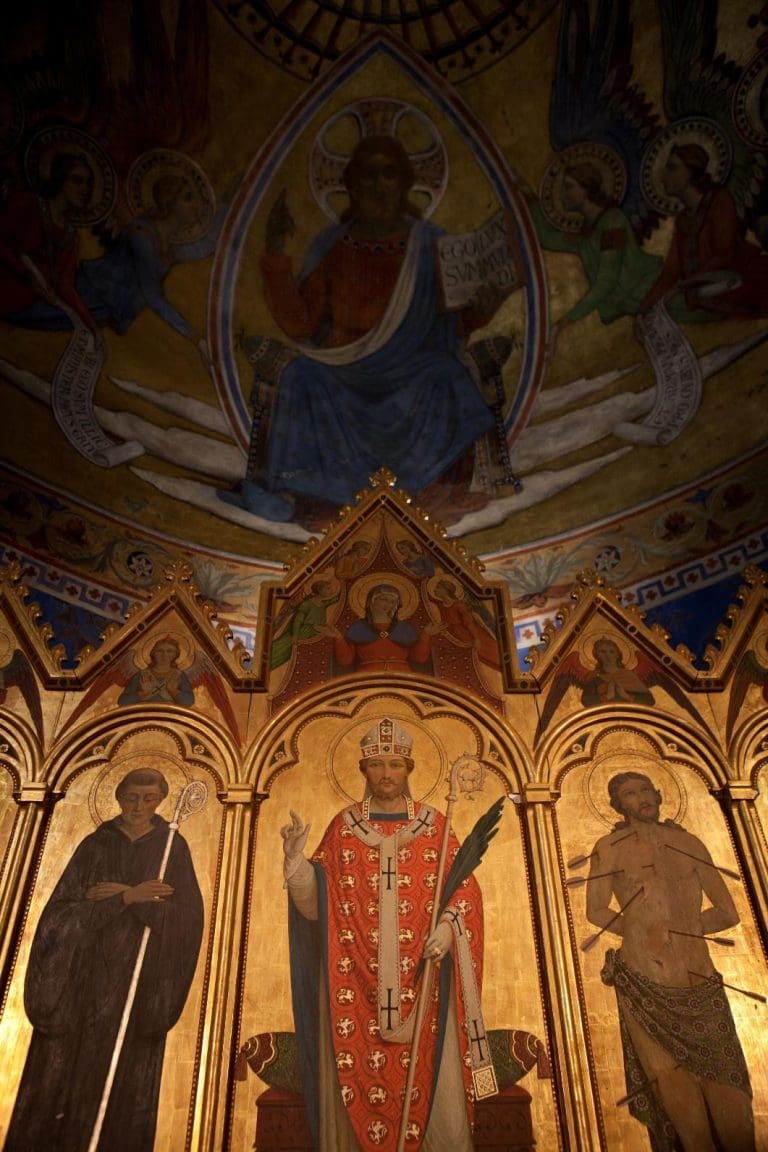Il 29 gennaio si festeggia San Costanzo, primo Vescovo e di Perugia e uno dei patroni del capoluogo umbro insieme a San Lorenzo e Sant’Ercolano. La storia della vita di San Costanzo e ciò che ne aleggia intorno è ricco di meraviglia, stupore, fede e misticismo con un pizzico di romanticismo e di dolcezze. Vediamo perché.
On January 29th, Saint Costanzo is celebrated, the first Bishop of Perugia, and one of the patrons of the Umbrian capital, along with Saint Lorenzo and Saint Ercolano. The story of the life of Saint Costanzo and what surrounds it is rich in wonder, amazement, faith, and mysticism, with a touch of romanticism and sweetness. Let’s see why.
Saint Costanzo, the Martyr
In “Mille Santi del Giorno” by Piero Bargellini, a collection of stories about the lives of saints, the description of Costanzo can be traced back to around the 2nd century AD. He was a man dedicated to faith, kindness, and generosity towards the poor, with a strong sense of duty to the Christian Church, especially during the persecutions of Emperor Marcus Aurelius.
It is narrated that Costanzo, under the rule of Marcus Aurelius, was martyred and brutally persecuted: confined in the calidarium (ancient Roman baths) at extremely high temperatures, he miraculously emerged unharmed. He was arrested several times and forced to walk on burning coals, but nothing could shake the faith of Saint Costanzo. Around the year 178, he was arrested again and beheaded in Foligno. His remains were then returned to Perugia, where he found rest in what would later become the first Cathedral of Perugia, outside the gates of San Pietro, now known as the Church of San Costanzo.
The Tradition of the Wink
For lovers of romanticism, here’s a legend that during the celebrations of the Saint, the image of San Costanzo can “wink” at unmarried girls (and virgins according to medieval tradition) who present themselves in the Church where the Saint rests, to inquire if they will marry within the year. Of course, it’s a play of lights and shadows that makes the whole thing magical with a hint of love.
For young ladies without the foresight of a happy event predicted by the Saint, the boyfriend will give them the typical Perugian sweet, especially associated with the Feast of San Costanzo, the Torcolo.
The Torcolo of San Costanzo
The typical sweet of the tradition to celebrate San Costanzo is indeed the Torcolo, behind which many legends and mysteries related to the Saint are hidden, making this sweet still charming and full of history today.
It is handed down, in fact, that the torcolo is shaped like a ring to recall the crown of flowers placed on the Saint’s body after decapitation, or that the hole represents the severed head of the Saint, and finally, that its donut shape refers to the crown removed from the head of the Saint once decapitated. This is why a sweet studded with colored candied fruits, in memory of the precious stones of the crown! The five cuts on the donut can be traced back to the entrances to the five districts of the historic center of Perugia: Porta San Pietro, Porta Sole, Porta Eburnea, Porta Susanna, and Porta Sant’Angelo.
The Torcolo of San Costanzo, despite its great importance during the celebration on January 29th, is a sweet that is now enjoyed in Umbria throughout the year!
Photo Credits
Regione Umbria
Umbria Tourism
Come di Perugia




